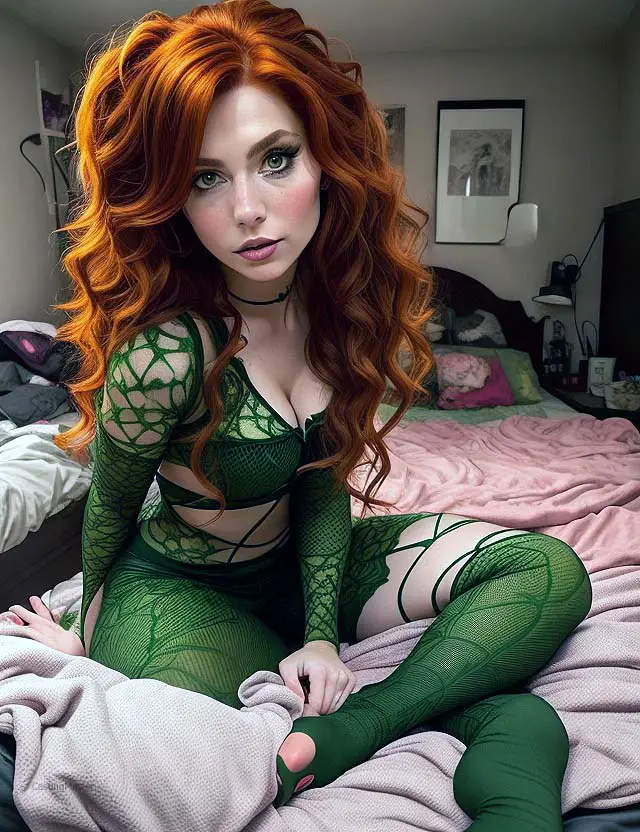Cosplay, which involves dressing up as a fictional character from a movie, comic book or video game, is all about creating an authentic and immersive experience. Just like the costume itself, painting is an important element of cosplay that can make or break the overall effect. A well-painted cosplay outfit not only adds realism to a character’s look but also helps to bring it to life.
What are Cosplay Painting Techniques?
Cosplay painting techniques refer to the methods used when applying paint and other finishing touches to your cosplay costume. These techniques are used to create realistic-looking textures, effects and colors on different materials such as foam, fabric, thermoplastics and more. Depending on the type of material being painted, different techniques may be required.
For example, painting foam requires a different approach than thermoplastics. Knowing how to use these techniques effectively can help you achieve professional-looking results in your cosplay.
The Importance of Painting in Cosplay
The right paint job can make all the difference in your cosplay outfit. While many people focus on getting the costume just right, they often neglect this crucial step.
Without proper paint application and detailing, even the most carefully crafted costumes can look unfinished or unconvincing. Among other things, painting allows cosplayers to add depth and texture to their costumes that would be impossible with fabric alone.
With well-applied paintwork, you can easily simulate metallic armor or weathered cloth for added authenticity. Additionally, using appropriate paints not only makes for better looking cosplays but also ensures durability so that your work lasts long into future conventions. We’ve created a complete guide to cosplay crafting if you’d like to learn about other techniques.
Overall then it’s clear that mastering painting techniques is essential for any serious cosplayer who wants their creations to stand out from the crowd. In the next sections of this article, we’ll delve into some of the various techniques used for different materials, giving you a detailed look at how to elevate your cosplay painting game.

Painting Techniques for Foam Materials
Cosplay costumes made of foam materials are popular among cosplayers due to their versatility, affordability, and lightweight. However, painting foam can be a challenging task without the right techniques. In this section, we will discuss the best ways to prepare foam surfaces for painting and choosing the right paint type and brand.
Preparing the Foam Surface for Painting
The first step in painting foam is preparing the surface. The foam’s porous nature means that it needs to be sealed with a primer or similar substance before applying any paint.
One of the most commonly used primers for foam is Plasti Dip. Apply Plasti Dip in several thin coats over your entire project until you get a smooth surface.
You also need to sand down rough spots or visible seams before priming. You can use fine-grit sandpaper with 220-grit or higher to do this work effectively.
Choosing the Right Paint Type and Brand
After preparing your surface, you want to choose an appropriate paint type and brand based on your preferences and budget. Acrylic paints are often used by cosplayers because they are easy to use, affordable, and come in various colors.
You should opt for high-quality acrylic paints like Liquitex when painting on foam materials because they adhere well without cracking or peeling away easily. Another option is fabric spray paint if you want a softer look than traditional acrylics provide.
Airbrushing vs.Hand Painting
Airbrushing is one of the popular techniques used by many professional cosplayers when painting on foams as it gives a smooth finish that replicates realistic textures made from leather or metal better than hand-painting would do. For those who prefer hand-painting methods, use a brush and painters tape to mask off any areas you don’t want to get paint on.
Tips and Tricks for Achieving a Smooth Finish
Getting a smooth finish comes with practice, but there are several tips you can use to make the process easier. First, use light coats of paint to avoid clogs or drips that will mess up your project surface.
You can also sand down the painted foam gently using fine-grit sandpaper between each coat if you notice any roughness or buildups before applying the next coat. Let your painting dry well between each coat before adding another layer of paint.
Mastering painting techniques for foam materials is an essential skill for cosplayers who want to achieve an outstanding and realistic look on their costumes. By prepping your foam surface correctly, choosing the right paint type and brand, selecting either hand-painting or airbrushing methods based on your preference, and following the tips listed above, you will be able to achieve a smooth finish that replicates most textures accurately.

Painting Techniques for Worbla and Thermoplastics
Preparing the thermoplastic surface for painting
Worbla and other thermoplastics are great materials for creating intricate cosplay pieces, but they can be tricky to paint. Before starting any painting, it’s important to prepare the surface by cleaning it thoroughly with soap and water.
Be sure to remove any dirt or debris that might interfere with the paint sticking properly. After cleaning, lightly sand the surface of the thermoplastic with a fine grit sandpaper.
This will help rough up the surface a bit, allowing paint to better adhere. Be careful not to sand too much or you may damage your piece.
Wipe down the surface with rubbing alcohol to remove any leftover residue or oils from your hands. This will give you a clean slate to start painting on.
Choosing the right paint type and brand
When it comes to choosing paint for Worbla and other thermoplastics, there are a few things to keep in mind. First off, look for paints that are specifically formulated for use on plastics.
They’ll have better adhesion properties than other types of paints. Acrylic paints tend to work well on thermoplastics and come in a wide variety of colors.
You can find them at most arts and crafts stores or online retailers like Amazon. Another option is spray paint designed specifically for plastic surfaces such as Krylon Fusion All-In-One Spray Paint which bonds well without needing primer first.
Heat setting techniques to prevent chipping and cracking
One of the biggest dangers when using Worbla is accidentally chipping or cracking your piece while wearing it out at conventions. To prevent this from happening, heat setting is key.
Once you’ve painted your piece, use a heat gun (or even a hair dryer) on low heat settings over it until the paint has set. This will help it adhere better and create a more durable finish.
Layering techniques to achieve depth and texture
Worbla and thermoplastics are great materials for creating intricate details and textures in cosplay pieces. To really make your piece stand out, use layering techniques when painting.
Start with a base coat of paint, then use a different color to paint on top. Using a dry brush technique, lightly brush the top color onto the surface in a way that allows some of the base coat to show through.
This will create depth and texture that would be difficult to achieve with just one color. Keep layering until you achieve your desired effect!
Painting Worbla and thermoplastics can be intimidating at first, but with these tips and tricks, you’ll be well on your way to creating stunning, intricately painted cosplay pieces in no time! Always remember to properly prepare your surface before painting, choose high-quality paints specifically formulated for plastics, heat set your piece for added durability, and use layering techniques for added depth and texture.

Painting Techniques for Fabric Materials
Fabric is a popular material for cosplaying costumes because it can be manipulated better than other materials like foam and thermoplastics. However, painting fabric requires a different approach because the texture of the fabric can cause paint to bleed or blend in an undesirable way. In this section, we will cover techniques for painting fabric materials that will help you achieve a seamless and professional finish.
Preparing the fabric surface for painting
Before you start painting, it’s important to prepare the fabric surface by washing it thoroughly with mild soap and water. This will remove any dirt or residue that may prevent the paint from adhering properly. Once your fabric is dry, iron it on low heat to ensure that there are no wrinkles or creases that could affect your paintwork.
Choosing the right fabric paint type and brand
Choosing the right kind of paint is crucial when working with fabrics. Acrylic paints are suitable for most fabrics, but some fabrics like silk require special types of paints.
Popular brands such as Jacquard and Tulip have special lines designed specifically for fabrics. These paints are usually sold at craft stores and online retailers.
Stenciling, airbrushing, or hand-painting methods
The method you choose to apply your paint depends on the complexity of your design. Stenciling works well if you want to create a uniform pattern over a large area of your costume. Airbrushing produces an even finish but requires more skill and equipment than hand-painting methods which work best if you want to add fine details to your design.
Tips on blending colors seamlessly
If you’re blending colors on fabric, try using a wet-on-wet technique which involves applying two colors that are still wet to create a seamless blend. Start by applying one color to the fabric, then immediately add the second color next to it.
Use a brush or sponge to blend the colors together while they’re still wet. Another way to blend colors is by layering paint.
Apply one layer of paint, let it dry, and then apply another layer. This technique works well if you want to create a shading effect or add depth to your design.
With these tips and techniques, painting on fabric can be easy and fun. Remember that practice makes perfect, so don’t be afraid to experiment with different methods until you find what works best for you!
Detailing Techniques with Paints
Once you’ve painted the base colors of your cosplay, it’s time to add some details. This is where you can really make your costume pop! When painting, the fabric choice is very important when knowing what painting techniques can be used.
Detailing techniques include adding weathering effects, creating metallic finishes, and using shading techniques to add depth. Let’s dive into each of these techniques further:
Adding Weathering Effects to Create a Realistic Look
If you want to create a more realistic look for your cosplay, adding weathering effects is a must. This technique involves adding wear and tear to your costume as if it has been used in battle or worn over time. To achieve this effect, start by choosing a paint color that is slightly darker than the base color of your costume.
Use a dry brush technique to apply the paint in areas that would naturally experience wear and tear such as edges of armor or seams on clothing. You can also use a sponge or sandpaper to remove paint in areas where you want the base color to show through.
Remember: less is more when it comes to weathering effects. It’s easy to go overboard and end up with a costume that looks dirty instead of worn.
Creating Metallic Finishes with Paints
Metallic finishes are another great way to add detail and depth to your cosplay. There are several ways you can achieve this effect such as using metallic paint or applying metallic leaf. To create a metallic finish with paint, start by selecting the appropriate shade of metallic paint for your cosplay.
Apply the paint using an airbrush or brush strokes depending on your preference. You may need multiple coats depending on how opaque you want the finish to be.
If you’re using metallic leaf, apply adhesive where you want the leaf and then carefully press the leaf onto the adhesive. Once the adhesive is dry, use a soft brush to remove any excess leaf.
Using Shading Techniques to Add Depth
Shading techniques are a great way to add depth to your costume and make it look more three-dimensional. This technique involves using darker shades of paint to create shadows and lighter shades of paint to create highlights. To get started with shading, you’ll need a base color and at least two other colors: one darker and one lighter.
Start by applying your base color as you normally would. Then, using your darker shade, apply paint in areas where shadows would naturally occur such as creases or folds in fabric.
Next, use your lighter shade to highlight areas that would naturally catch light such as edges of armor or raised sections of fabric. Blend the shades together for a seamless effect.
Detailing techniques such as weathering effects, metallic finishes, and shading can take your cosplay from good to great. Experiment with different techniques until you find what works best for your cosplay and don’t be afraid to try new things!
Remember: practice makes perfect when it comes to painting techniques so don’t give up if it doesn’t look perfect on your first try. Keep practicing and you’ll soon be creating stunning cosplays that will turn heads at conventions!
Conclusion:
Throughout this article, we have taken a comprehensive look at the various painting techniques used in cosplay, ranging from foam materials to thermoplastics and fabrics. We have discussed how to prepare different surfaces for painting, choosing the right type of paint and brand as well as various methods that can be employed to achieve a smooth finish. We’ve also tackled some advanced techniques such as layering for depth and texture, weathering effects for realism, metallic finishes using paints and shading techniques to add depth.
By mastering these techniques, you can elevate your cosplay game by creating stunning costumes that are both visually appealing and realistic in appearance. It is essential to note that painting is an art form that requires practice and patience if you want to achieve the desired results.
You cannot expect to master all of the techniques discussed here in one go. However, with time and practice, you will start seeing improvement in your skills.
The final takeaway from this article is that while cosplay is about having fun expressing your creativity through costumes inspired by popular characters or themes; it’s also an opportunity to push yourself artistically by mastering new skills like painting. Cosplay provides a creative outlet where one can express themselves through unique designs.
Learning how to paint various materials used in cosplay opens up many possibilities for creating beautiful-looking costumes. With proper preparation of surfaces before painting, choosing the right type of paint and brand as well as practicing the different methods discussed herein- you can elevate your cosplay game beyond expectations!





